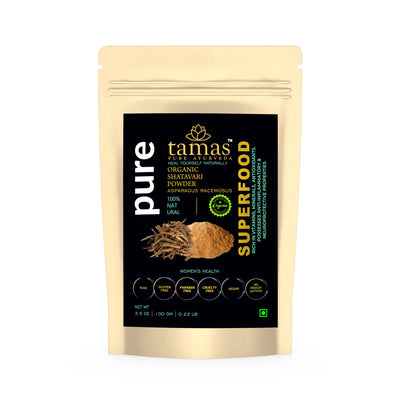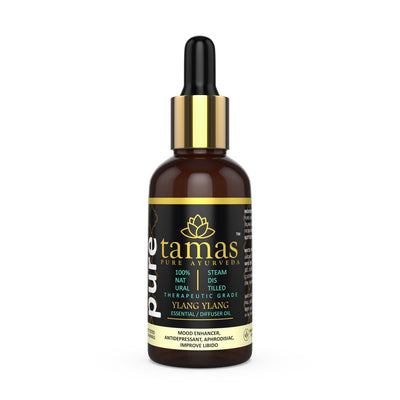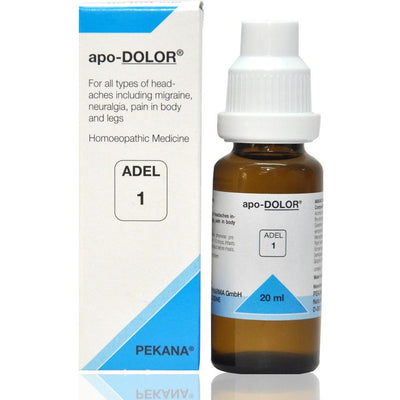
Rasnasapthakam Kwath
Backache and joint pain is a problem that affects most people of both genders at some point in their life. It makes doing one’s daily tasks very difficult. Knee pain impacts a person’s mobility. Rasnasapthakam Kwath aims to help provide relief from the above discomforts.
Benefits
Rasnasapthakam Kwath contains a mix of powerful herbs widely used in the preparation of Ayurvedic medicine for joint pain and swelling as well as Ayurvedic backache medicine backache and knee pain. Some ingredients are great for the elderly undergoing swollen knee treatment. This potent Ayurvedic formulation is made with Rasna as the star ingredient. It is combined with other ingredients that make up a total of seven which translates as “Sapta’, hence the name Rasnasapthakam. This medicine is a Kwath which is a liquid decoction of the herbs. Such formulations are commonly used in Ayurvedic treatment to balance the Vata and Kapha Dosha caused joint problems such as back pain, arthritis, gout, lumbago sciatica, knee pain.
Ingredients
Rasna (Alpinia officinarum)
Dosage
15ml twice daily diluted in 60ml of boiled and cooled water or as directed by the Ayurvedic physician.
Ayurveda and Back Pain
Back pain is called Katishoola in Ayurveda. The word ‘Kati’ refers to lower back/hip and ‘Shoola’ is pain. This pain is caused primarily by Vata dosha imbalances and is classified under the Vataja Nantmaja Vyadhis or Vata diseases in the classics.
There are two major causes of joint problems according to Ayurveda. The first type is caused by joints being poorly nourished. This causes low bone density and weakness in the joints. It is caused by the aggravation of the Vyana Vata. It impacts the ability of the digestion, circulation and nourishment to the joint. The Shleshaka Kapha lubricates the joints. The aggravated Vyana Vata dries up this joint lubrication and intensifies the problem. The second type of joint problems is caused by Ama. Ama is the metabolic toxic waste that is generated when the digestive process is not efficient or complete. This Ama, when generated over a longer period of time, accumulates and becomes a highly toxic Amavisha. This is the primary cause of many health issues. When the Ama affects the joints over a period of time it causes inflammation and swollen joints. It is the cause of degenerative diseases that affect the joints. Amavisha affects a weaker part of the body and causes weakness or stiffness. When it is a degenerative problem it can affect the whole body. One should attempt to rebalance the Doshas with proper diet, lifestyle and Ayurvedic medicines. In addition to medicinal backache treatment and Ayurvedic medicine for knee pain and swelling the Ayurvedic doctor may also prescribe external Panchkarma treatments and exercises to restore flexibility to the affected parts of the body. Detoxification and removal of Ama are important. One should make lifestyle and diet change to ensure that the body does not retain Ama after treatment.
Back Pain – An overview
There are many causes of joint pain according to Western medicine. Some of the most common causes are chronic diseases such as osteoarthritis and rheumatoid arthritis. Gout is a condition that causes joint pain because of the accumulation of uric acid crystals in the body. When a joint is overused it could become painful due to bursitis, a condition that is most common in the elbow, shoulder, hip or knee. Overuse can also cause problems with the tendons in the area called tendinitis. Back pain is most often caused by posture problems and overuse or strain. Knee pain can be caused by lack of use or overuse and strain. Joint pain is usually treated with rest and anti-inflammatory medication. If the pain is because of injury, using an ice pack is recommended.
Backache and joint pain is a problem that affects most people of both genders at some point in their life. It makes doing one’s daily tasks very difficult. Knee pain impacts a person’s mobility. Rasnasapthakam Kwath aims to help provide relief from the above discomforts.
Benefits
Rasnasapthakam Kwath contains a mix of powerful herbs widely used in the preparation of Ayurvedic medicine for joint pain and swelling as well as Ayurvedic backache medicine backache and knee pain. Some ingredients are great for the elderly undergoing swollen knee treatment. This potent Ayurvedic formulation is made with Rasna as the star ingredient. It is combined with other ingredients that make up a total of seven which translates as “Sapta’, hence the name Rasnasapthakam. This medicine is a Kwath which is a liquid decoction of the herbs. Such formulations are commonly used in Ayurvedic treatment to balance the Vata and Kapha Dosha caused joint problems such as back pain, arthritis, gout, lumbago sciatica, knee pain.
Ingredients
Rasna (Alpinia officinarum)
- This herb is used in traditional Ayurvedic formulations as an immunomodulator, anti-diabetic, anti-oxidant, anti-microbial, diuretic, and anti-ulcerative.
- It is used in traditional medicine to treat joint pain, digestive problems, respiratory problems and as a blood purifier. It stimulates the digestive fire and pacifies the vitiated Vata Dosha.
- Its immunomodulatory, diuretic and anti-oxidant properties make it an ideal back ache remedy
- It is used as an adaptogen and for anti-stress
- It pacifies all the three Doshas. When there is a Dosha that is at less than optimum levels this herb restores it. When there is an increased level of a Dosha, it helps balance it.
- This herb is an excellent detoxifier to remove the Ama from the body. This helps to treat the cause of joint problems at the root.
- It is used in traditional medicine for its properties of being an immunomodulator, rejuvenating, anti-inflammatory, digestive, hypoglycemic, anti-constipation, antacid, analgesic, antioxidant, antimutagenic, gastrointestinal protective, detoxifier and hematogenic.
- This herb is central to many important Ayurvedic medicine formulations. It is very useful in traditional knee pain and backache treatment
- It is useful in the treatment of infection, immune deficiency, rheumatoid arthritis, gout, fever, chronic fever, recurrent colds and infections, chronic fatigue and chronic catarrh
- It pacifies the Vata and Pitta Doshas
- It is useful in Ayurveda as an antioxidant, immunomodulatory, antibacterial, wound healing, hepatoprotective, antiparasitic, antitumor, antiulcer, antifungal, anti-inflammatory, analgesic
- Deodar tree
- It balances the Kapha and Vata Doshas
- Relieves the Ama in the body
- Relieves swelling and used in Ayurveda as an anti-inflammatory making it very good for knee swelling treatment
- Promotes ovulation and is useful in treating erectile dysfunction
- Diuretic restores the fluid balance in the body
- It boosts energy and vitality
- Helps in glucose intolerance and polycystic ovarian syndrome (PCOS)
- Balances Vata and Kapha Doshas
- Used in Ayurveda as a diuretic, anti-inflammatory and swelling reduction properties. This makes it good for backache medicine
- It balances the Kapha and Vata Doshas
- It is useful in the Ayurvedic treatment of liver problems, cardiac problems, hypertension, cough, cold, abdominal pain, menorrhagia, haemorrhoids and as an aphrodisiac.
- It is used as an anti-toxic in traditional medicine.
Dosage
15ml twice daily diluted in 60ml of boiled and cooled water or as directed by the Ayurvedic physician.
Ayurveda and Back Pain
Back pain is called Katishoola in Ayurveda. The word ‘Kati’ refers to lower back/hip and ‘Shoola’ is pain. This pain is caused primarily by Vata dosha imbalances and is classified under the Vataja Nantmaja Vyadhis or Vata diseases in the classics.
There are two major causes of joint problems according to Ayurveda. The first type is caused by joints being poorly nourished. This causes low bone density and weakness in the joints. It is caused by the aggravation of the Vyana Vata. It impacts the ability of the digestion, circulation and nourishment to the joint. The Shleshaka Kapha lubricates the joints. The aggravated Vyana Vata dries up this joint lubrication and intensifies the problem. The second type of joint problems is caused by Ama. Ama is the metabolic toxic waste that is generated when the digestive process is not efficient or complete. This Ama, when generated over a longer period of time, accumulates and becomes a highly toxic Amavisha. This is the primary cause of many health issues. When the Ama affects the joints over a period of time it causes inflammation and swollen joints. It is the cause of degenerative diseases that affect the joints. Amavisha affects a weaker part of the body and causes weakness or stiffness. When it is a degenerative problem it can affect the whole body. One should attempt to rebalance the Doshas with proper diet, lifestyle and Ayurvedic medicines. In addition to medicinal backache treatment and Ayurvedic medicine for knee pain and swelling the Ayurvedic doctor may also prescribe external Panchkarma treatments and exercises to restore flexibility to the affected parts of the body. Detoxification and removal of Ama are important. One should make lifestyle and diet change to ensure that the body does not retain Ama after treatment.
Back Pain – An overview
There are many causes of joint pain according to Western medicine. Some of the most common causes are chronic diseases such as osteoarthritis and rheumatoid arthritis. Gout is a condition that causes joint pain because of the accumulation of uric acid crystals in the body. When a joint is overused it could become painful due to bursitis, a condition that is most common in the elbow, shoulder, hip or knee. Overuse can also cause problems with the tendons in the area called tendinitis. Back pain is most often caused by posture problems and overuse or strain. Knee pain can be caused by lack of use or overuse and strain. Joint pain is usually treated with rest and anti-inflammatory medication. If the pain is because of injury, using an ice pack is recommended.
You may also like
More from Kerala Ayurveda
More from Aasaan
Recently viewed

















